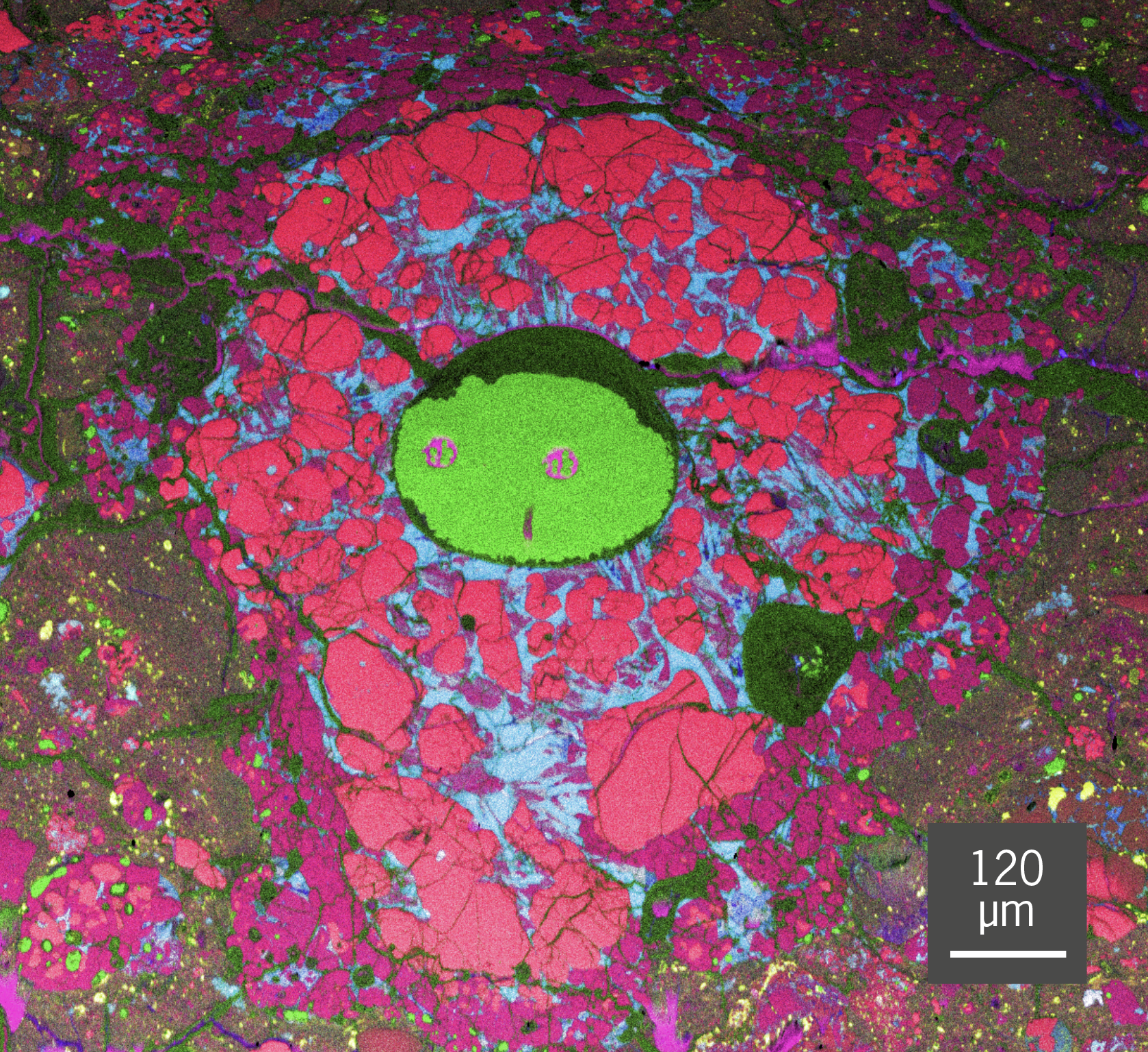The model suggests that the first pre-planets were highly porous dustballs, resembling giant balls of fairyfloss. Slow impacts between dustballs would generate shock waves and high temperatures – sufficient to increase the density and fuse dust grains together to create solid rock.
In the protoplanetary disc some millimetre-sized dust balls were melted, possibly by localised shock waves caused by turbulence in the disc. They resolidify, forming spherical droplets called chondrules. Chondrules are often found within meteorites, surrounded by a fine-grained matrix, thought to be the fused dust grains. If slow impacts have occurred, some deformation and alignment of matrix grains around the solid chondrules should be seen in the rocks.
Prof. Bland’s PhD students, Ms Lucy Forman and Mr Luke Daly, are analysing meteorites to find supporting physical evidence. Mr Daly used complementary microscopy techniques in the AMMRF (now Microscopy Australia) at the University of Sydney to analyse the composition and orientation of individual crystals and found them to be aligned around the chondrule. This suggests compression along one axis, consistent with a slow impact immediately before the grains were fused.
These results are the first tangible evidence of the earliest rock-forming process in our developing solar system.

Elemental map of part of a meteorite with a chondrule in the centre (green and pink). Aligned magenta grains can be seen around the chondrule.
Elemental map of part of a meteorite with a chondrule in the centre (green and pink). Aligned magenta grains can be seen around the chondrule.
October 24, 2014